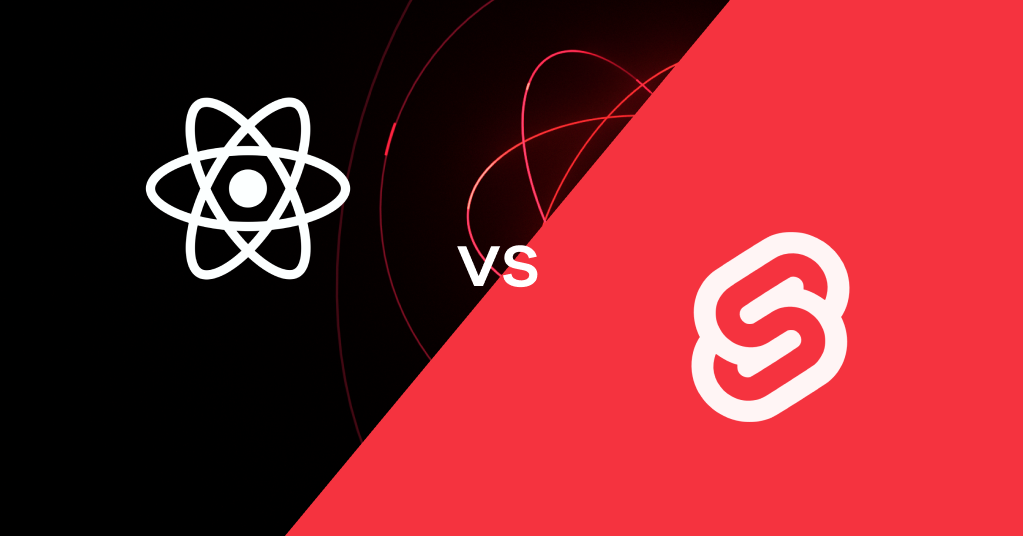Frontend frameworks significantly impact how online experiences will emerge in the hurried world of web development. While there are many possibilities, two outstanding challengers, ReactJS and Svelte, have drawn developers’ and companies’ interest with their distinctive advantages and strategies. Understanding the fundamental distinctions and parallels between these frameworks is crucial for decision-making as web developers and project managers attempt to produce stunning and effective web applications.
This blog attempts to thoroughly compare ReactJS and Svelte, illuminating their core ideas, architectural paradigms, performance, usability, community support, and practical applications. This research will give you helpful information to select the best frontend development route, whether you’re an experienced developer eager to discover emerging opportunities or a project manager looking for the finest technology for your team.
We will emphasize the advantages when you hire Reactjs developers who can make the most of these frameworks’ capabilities and trade-offs to produce amazing web experiences by gaining an understanding of ReactJS and Svelte.
By the time you finish reading this blog, you’ll have a solid understanding of Svelte and ReactJS, enabling you to assemble a talented team of engineers and confidently make decisions for your projects. Take advantage of the knowledge presented here to get off on a fruitful journey of developing stunning web applications that stand out in the online world.
Head–to–head comparison of React vs Svelte
Popular frontend frameworks like React and Svelte provide strong capabilities for creating dynamic and interactive online apps. In this side-by-side comparison, we’ll examine the fundamental distinctions between React and Svelte, ranging from their guiding concepts to performance and usability. Let’s get started:
Overviews
ReactJS
The Facebook-developed and-maintained ReactJS framework has revolutionized frontend programming. React’s declarative approach enables developers to specify the intended UI state, while its virtual DOM and diffing mechanism effectively handle modifications to the actual DOM. React is highly suited for large-scale apps with frequent UI modifications and dynamic content because this guarantees the best rendering performance. React uses a component-based design to separate the user interface into reusable components, each of which has its own state and lifecycle routines.
Svelte
Svelte, a comparatively more recent rival, offers a revolutionary method of frontend development. Unlike conventional frameworks, Svelte uses its compiler to move the labor-intensive tasks from the runtime to build time. Smaller and quicker apps are produced as a result of Svelte’s compilation of the code into specially optimized vanilla JavaScript during the construction phase. Components are converted straight into imperative code during this compilation process, which removes the requirement for a virtual DOM and produces outstanding runtime efficiency. Like React, Svelte adopts a component-based architecture that enables developers to create reusable and maintainable UI elements. Svelte is an appealing option for quick prototyping and applications where performance is crucial due to its simplicity and simple, easy-to-understand syntax, which offers developers a gentle learning curve.
Performance
Performance-wise, ReactJS, and Svelte both excel in different ways. The virtual DOM of React and its effective diffing technique guarantee the best rendering performance, especially in programs that often alter their user interfaces. The addition of the virtual DOM library results in a larger bundle size as a trade-off.
On the other hand, Svelte produces reduced bundle sizes and lightning-fast runtime performance due to its compilation process. Svelte delivers highly optimized JavaScript by removing the virtual DOM, resulting in quicker load times and more fluid interactions.
Ease of Use
For developers, particularly those with experience in JavaScript and contemporary web development, ReactJS’ JSX syntax offers a familiar approach. For those who are new to JSX, the learning curve could be higher.
Svelte, in comparison, has an easy-to-use syntax that makes it simple for anyone with little frontend development knowledge to get started. Svelte’s usability is facilitated by the absence of JSX and the seamless fusion of HTML and JavaScript.
Community & Ecosystem
One of the most significant and vibrant communities in the web development industry is ReactJS. Developers may easily access solutions and best practices because of the ecosystem’s wide collection of third-party libraries, tools, and support.
Svelte is quickly garnering its footing in the community. Its ecosystem may be smaller than React’s, but it is nevertheless expanding steadily, thanks in large part to a dedicated community that actively supports the development of the framework.
Real World Use Cases
From simple, one-page applications to intricate, large-scale projects, ReactJS has demonstrated its value in a variety of applications. Its versatility and performance make it a great option for companies and developers looking to create dynamic, feature-rich apps.
Svelte excels in tasks when performance is crucial and simplicity is desirable. Its compilation method makes it an appealing option for apps that demand blazingly quick load speeds and seamless user interactions.
Learning Curve
The learning curve pertains to the ease or difficulty developers may experience when initially delving into a specific technology or framework. In the context of React and Svelte, React’s learning curve might be more challenging due to its utilization of JSX and the virtual DOM concept, necessitating some initial adaptation.
Conversely, Svelte’s straightforward and intuitive syntax ensures a smoother learning process, making it more approachable for newcomers. With Svelte’s gentle learning curve, developers can easily grasp its fundamentals and begin building impressive web applications.
Bundle Size
Depending on how the project is configured and the libraries that are being used, React’s bundle size can change. React comes preloaded with additional libraries including the virtual DOM, which might increase the size of the package. Even though React is a short program by itself, the addition of additional dependencies can make the bundle’s size larger.
Hire Dedicated Developers who can use strategies like code splitting, tree shaking, and minification to reduce the size of React bundles. To lower the total size, the bundle is broken up into smaller pieces using code splitting, tree shaking, and minification, and extra characters are removed using deduplication.
On the other hand, because it uses a compiler-based methodology, Svelte adopts a distinctive strategy for bundle size optimization. Svelte combines parts into vanilla JavaScript that is highly efficient during the building process. As a result, there is no longer a requirement for a virtual DOM, and the final bundle is considerably smaller.
Svelte applications typically have smaller bundle sizes than React applications as a result. Performance gains and faster loading times are two special advantages of this.
Framework Overhead
Due to the additional libraries required by React’s framework for complicated state management, such as Redux or MobX, application bundle sizes grow as apps get bigger. Multiple dependencies may result in a sizable overhead despite the architecture’s modularity and component-based design. In contrast, the compiler-based method of Svelte optimizes code as the application is being built, resulting in less framework overhead and a smaller bundle. The internal reactivity system and reduced development process reduce the need for external state management, resulting in a more effective and portable solution.
Conclusion
In conclusion, React and Svelte have advantages and are appropriate for various project types. React is a solid option for intricate and extensive apps because of its virtual DOM and developed ecosystem. However, Svelte’s compiler-based approach gives exceptional performance for projects where speed is a top priority. Consider the needs of your project, the team’s experience, and the desired user experience before selecting a choice. The choice ultimately depends on the particular requirements and objectives of your project. Both frameworks offer strong tools for developing contemporary web apps.






